
The Sand Creek massacre was a massacre of Cheyenne and Arapaho people by the U.S. Army in the American Indian Wars that occurred on November 29, 1864, when a 675-man force of the Third Colorado Cavalry under the command of U.S. Volunteers Colonel John Chivington attacked and destroyed a village of Cheyenne and Arapaho people in southeastern Colorado Territory, killing and mutilating an estimated 70 to over 600 Native American people. Chivington claimed 500 to 600 warriors were killed. However, most sources estimate around 150 people were killed, about two-thirds of whom were women and children. The location has been designated the Sand Creek Massacre National Historic Site and is administered by the National Park Service. The massacre is considered part of a series of events known as the Colorado Wars.

The National Statuary Hall is a chamber in the United States Capitol devoted to sculptures of prominent Americans. The hall, also known as the Old Hall of the House, is a large, two-story, semicircular room with a second story gallery along the curved perimeter. It is located immediately south of the Rotunda. The meeting place of the U.S. House of Representatives for nearly 50 years (1807–1857), after a few years of disuse it was repurposed as a statuary hall in 1864; this is when the National Statuary Hall Collection was established. By 1933, the collection had outgrown this single room, and a number of statues are placed elsewhere within the Capitol.
The Shoshone or Shoshoni are a Native American tribe with four large cultural/linguistic divisions:

The National Statuary Hall Collection in the United States Capitol is composed of statues donated by individual states to honor persons notable in their history. Limited to two statues per state, the collection was originally set up in the old Hall of the House of Representatives, which was then renamed National Statuary Hall. The expanding collection has since been spread throughout the Capitol and its visitor center.

Washakie was a prominent leader of the Shoshone people during the mid-19th century. He was first mentioned in 1840 in the written record of the American fur trapper, Osborne Russell. In 1851, at the urging of trapper Jim Bridger, Washakie led a band of Shoshones to the council meetings of the Treaty of Fort Laramie. Essentially from that time until his death, he was considered the head of the Eastern Shoshones by the representatives of the United States government. In 1979, he was inducted into the Hall of Great Westerners of the National Cowboy & Western Heritage Museum.
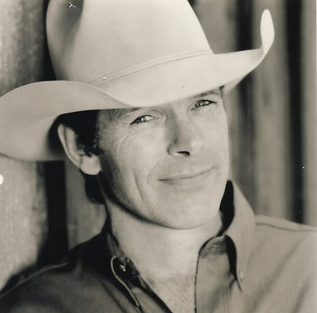
Christopher Lee LeDoux was an American country music singer-songwriter, bronze sculptor, and hall of fame rodeo champion. During his career, LeDoux recorded 36 albums, which have sold more than six million units in the United States as of January 2007. He was awarded two gold and one platinum album certifications from the Recording Industry Association of America (RIAA), was nominated for a Grammy Award, and was honored with the Academy of Country Music Cliffie Stone Pioneer Award. LeDoux is also the only person to participate and also perform at the Houston Livestock Show and Rodeo.

The Wind River Indian Reservation, in the west-central portion of the U.S. state of Wyoming, is shared by two Native American tribes, the Eastern Shoshone and the Northern Arapaho. Roughly 60 mi (97 km) east to west by 50 mi (80 km) north to south, the Indian reservation is located in the Wind River Basin, and includes portions of the Wind River Range, Owl Creek Mountains, and Absaroka Range.

Sacagawea was a Lemhi Shoshone woman who, in her teens, helped the Lewis and Clark Expedition in achieving their chartered mission objectives by exploring the Louisiana Territory. Sacagawea traveled with the expedition thousands of miles from North Dakota to the Pacific Ocean, helping to establish cultural contacts with Native American people and contributing to the expedition's knowledge of natural history in different regions.

James Trosper is the current Eastern Shoshone Sun Dance chief. He is widely regarded as “a respected voice on traditional Plains Indian spirituality.” He is Director of the High Plains American Indian Research Institute. HPAIRI facilitates a wide variety of partnerships between the University of Wyoming and the tribes of the Wind River Indian Reservation in Fort Washakie, Wyoming “to work together in ways that empower tribes, nurture innovation for American Indian sustainability, and demonstrate respect for Native peoples’ cultures, traditions, laws, and diverse expressions of sovereignty.”
Benjamin Matthew Victor is an American sculptor living and working in Boise, Idaho. He is the only living artist to have three works in the National Statuary Hall in the United States Capitol. He is currently sculpting his fourth statue for the Statuary Hall, of Daisy Bates. He was only 26 years old when his first statue, Sarah Winnemucca, a Paiute activist in Nevada, was dedicated in the Hall in 2005, making him the youngest artist to ever be represented in the Hall. In 2014, his sculpture of Norman Borlaug, "the father of the Green Revolution," was dedicated in the National Statuary Hall and in 2019, his statue of Chief Standing Bear, a Native American rights leader, was dedicated in the National Statuary Hall making him the only living artist to have three sculptures in the Hall.

George Washington is a large bronze sculpture of George Washington by John Quincy Adams Ward, installed on the front steps of Federal Hall National Memorial on Wall Street in New York City.
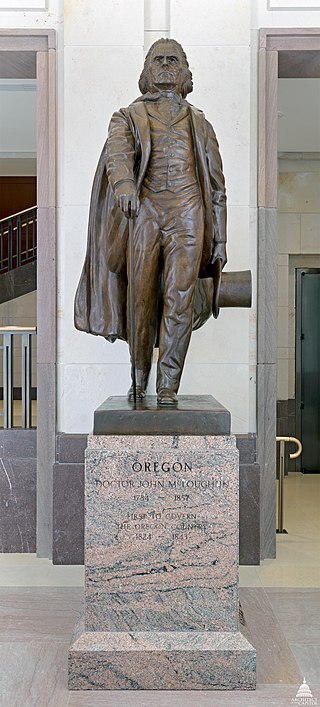
John McLoughlin, also known as Dr. John McLoughlin, is a bronze sculpture of John McLoughlin by Alexander Phimister Proctor and completed by his son Gifford MacGregor Proctor. One statue is installed at the Oregon State Capitol grounds in Salem, Oregon; another is installed in Washington, D.C., as part of the National Statuary Hall Collection.

Joseph Wheeler is a bronze sculpture commemorating the Confederate and American military commander and politician of the same name by Berthold Nebel, installed in the United States Capitol as part of the National Statuary Hall Collection. The statue was gifted by the state of Alabama in 1925.
Charles Brantley Aycock is a bronze sculpture depicting the American politician of the same name by Charles Keck, installed in the United States Capitol's crypt as part of the National Statuary Hall Collection. The statue was gifted by the U.S. state of North Carolina in 1932.

Helen Keller is a bronze sculpture depicting the American author and political activist of the same name by Edward Hlavka, installed in the United States Capitol Visitor Center's Emancipation Hall, in Washington, D.C., as part of the National Statuary Hall Collection. The statue was gifted by the U.S. state of Alabama in 2009, and replaced one depicting Jabez Lamar Monroe Curry, which had been donated in 1908.
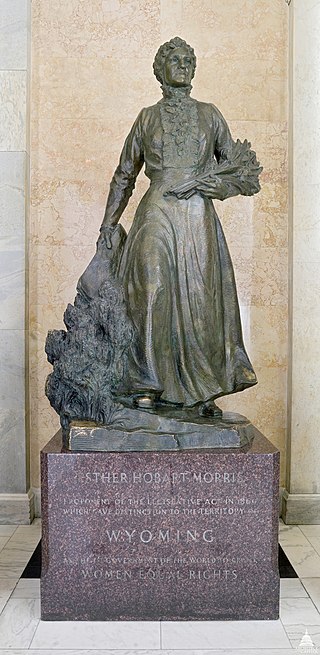
Esther Hobart Morris is a bronze sculpture depicting the first woman justice of the peace in the United States by Avard Fairbanks.
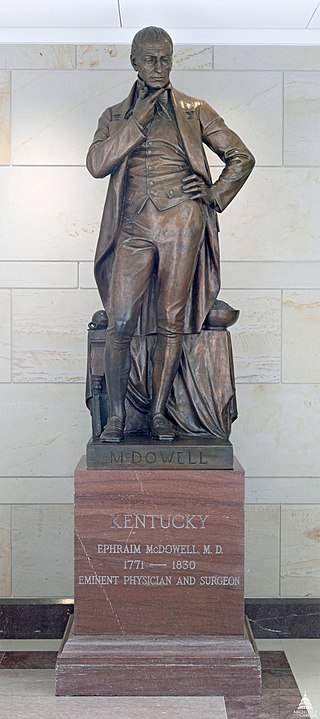
Ephraim McDowell is a bronze sculpture depicting the American physician and surgeon of the same name by Charles Henry Niehaus, installed in the United States Capitol Visitor Center, in Washington, D.C., as part of the National Statuary Hall Collection. The statue was gifted by the U.S. state of Kentucky in 1929.
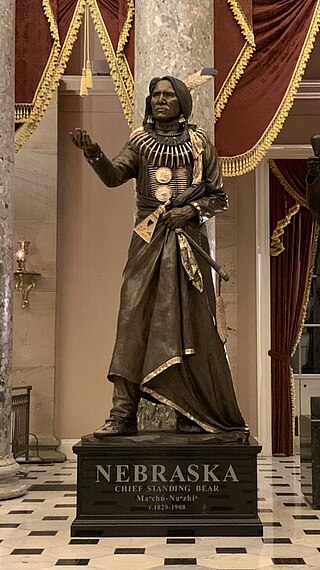
In 2019, the U.S. state of Nebraska donated a bronze sculpture of Standing Bear by Benjamin Victor to the National Statuary Hall Collection. The statue is installed in the United States Capitol's National Statuary Hall, in Washington, D.C.
Peter M. Fillerup was an American sculptor. A member of the Church of Jesus Christ of Latter-day Saints, he attended Brigham Young University–Idaho and Brigham Young University in Provo. He was trained by Utah sculptor Avard Fairbanks. He designed a sculpture of Porter Rockwell, who served on the Council of Fifty, as well as lighting fixtures for 20 LDS temples, including the Payson Utah Temple and the Lima Peru Temple. In 1997, he designed the Hilda Erickson Memorial Statue, a public statue in memory of all American pioneers in Grantsville, Utah.

A bronze statue of American evangelist Billy Graham is installed at the United States Capitol's crypt, in Washington, D.C., as part of the National Statuary Hall Collection. It was designed by artist Chas Fagan.

















